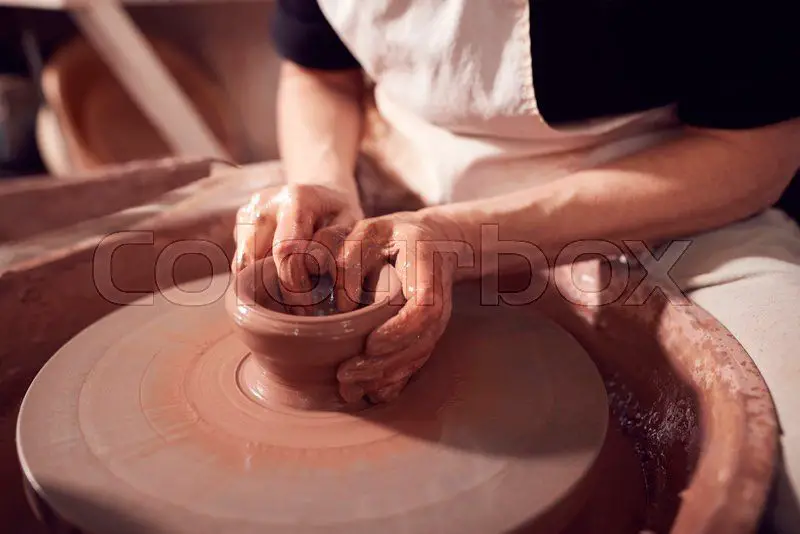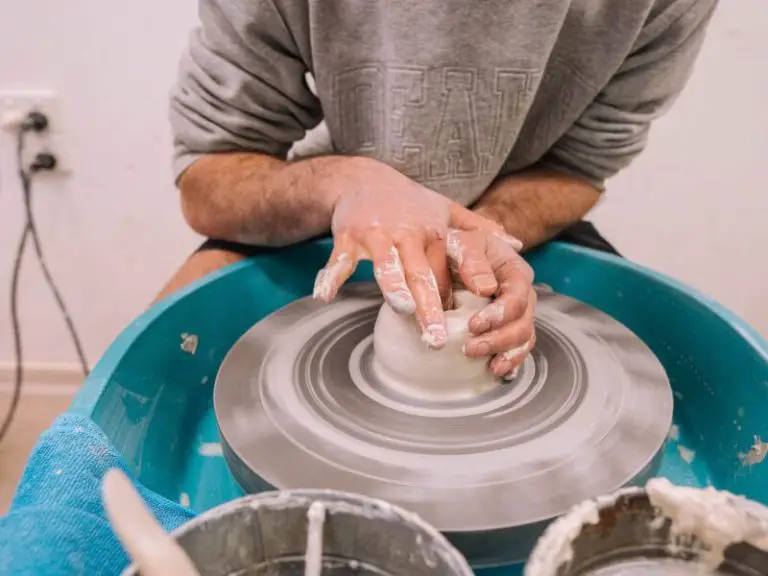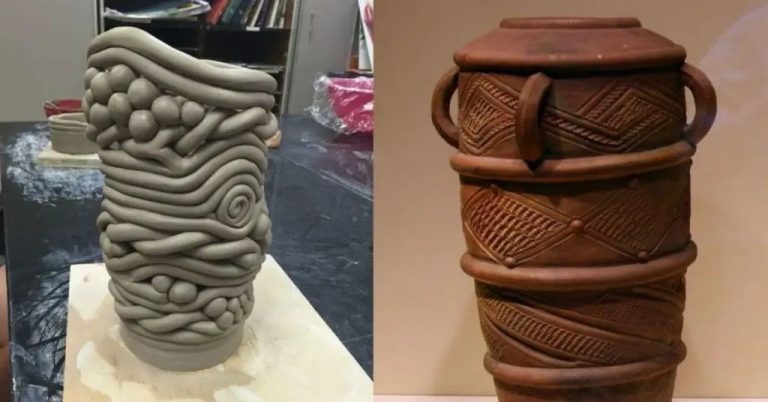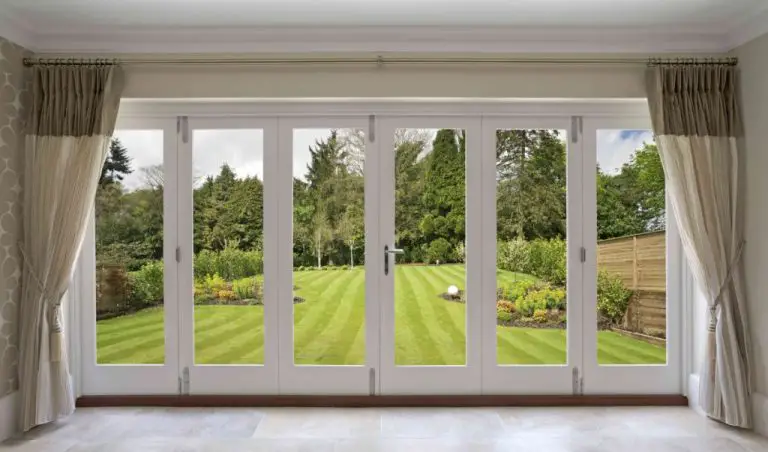Is It Expensive To Get Into Pottery?
Pottery and ceramics have been popular crafts and artforms for thousands of years, but have seen a resurgence in recent decades as a recreational hobby. The tactile and creative nature of working with clay appeals to people of all ages and backgrounds. Shaping clay into functional pieces like mugs, bowls, and vases or decorative sculptures and wall hangings provides a rewarding creative outlet. Classes are offered for beginners through advanced students at local community centers, private studios, and colleges in most areas. As a hobby, pottery allows for artistic expression, development of fine motor skills, and connecting with culture and history.
Cost of Supplies
The cost of supplies is one of the biggest expenses when getting started with pottery. At a minimum, you’ll need clay, basic tools, pottery wheels, kilns, and glazes.
Clay is available in 25-lb bags and costs $20-30 on average. You’ll go through clay quickly as a beginner, so expect to spend $100+ on clay in your first few months. The type of clay you choose also affects cost – porcelain is more expensive than stoneware or earthenware.
Basic pottery tools like ribs, trimming tools, cutting wires, and modeling tools can cost $150-300 to get a full starter set. You may also want to invest in a pottery wheel, which range from $300 for a tabletop version to over $2000 for heavy-duty wheels.
Kilns are a major investment, with prices starting at $500 for a small electric kiln and going up to thousands for large gas-fired kilns. Glazes and specialty firing supplies can also add a few hundred dollars in startup costs.
In total, expect to spend $1000-2000 on supplies as a beginner potter. Buying quality tools and equipment will save you money and frustration in the long run.
Studio Fees
Community pottery studios typically offer classes, private lessons, and memberships. Costs vary depending on the amenities, location, and types of membership.
For classes, expect to pay $20-40 per class depending on length and if clay/firings are included. Private lessons range from $40-100 per hour. Many studios offer deals like 5 classes for the price of 4.
Memberships provide ongoing studio access. Fees are around $150-175 per month for a regular shelf, $160-200 for a top shelf, with commitments of 1-3 months. Membership includes studio use, glazes, and firing fees of $1-2 per piece.
For example, The Pottery Studio charges $140-$170 for regular memberships and $160-$200 for top shelves. Some studios like Art House offer single month memberships starting at $150.
Studio access enables creating large quantities of pieces. But classes may be preferred for beginners to learn basics before committing to a membership.
Building a Home Studio
Building your own pottery studio at home requires having adequate space as well as purchasing the necessary equipment. The main pieces of equipment needed are a potter’s wheel, a kiln, extruder, and various hand tools. According to one Reddit user, basic equipment costs can include:
- Potter’s wheel – $1,400
- Extruder – $400
- Kiln – $5,290
Many recommend having a separate room or outbuilding for a home studio to keep clay dust contained. The space should have enough room for the wheel, worktables, storage shelves, the kiln, and elbow room to work comfortably. Good ventilation, lighting, and electrical outlets are also important factors in setting up your studio space. Overall, while establishing your own home pottery studio requires an initial investment, you can build an efficient workspace tailored to your needs and save on studio fees in the long run.
Ongoing Costs
Pottery can have substantial ongoing costs depending on how involved you get with the hobby. The main recurring costs are raw materials like clay and glazes. These will need to be replenished regularly as you use them up with your projects. According to Soul Ceramics, you can expect to spend $25-50 per 25 lb bag of clay. Glazes may cost $15-25 per pint. For a moderately active potter, expect to spend $50-100 per month on these raw materials.

Replacement of worn tools and studio items is another expense. Pottery wheels require maintenance like belt replacements every few years. Kilns may need repairs. And tools like sculpting knives will dull over time and need replacement. Budgeting $100-300 yearly for maintenance and replacements is recommended.
Ways to Save
Getting into pottery does not have to be prohibitively expensive if you are savvy about finding deals and creative about sharing resources. Here are some tips to cut costs:
Buy used equipment when possible. Check online classified ads, thrift stores, estate sales, and auction sites for gently used wheels, kilns, tools, and supplies. While the savings over new vary, often 50% discounts can be found on quality used equipment (https://www.soulceramics.com/pages/is-pottery-an-expensive-hobby).
Consider sharing studio space, wheels, kilns, and tools with other potters. Splitting costs and coordinating schedules to share access can greatly reduce expenses. Some communities have cooperative studios or maker spaces specifically for pooling high-cost ceramics equipment.
Watch for sales, coupons, and student discounts from retailers. Sign up for promotions and loyalty programs with ceramics suppliers to receive periodic discounts and savings on essentials.
Start with small batches of clay and glazes rather than buying bulk. Test different varieties before committing to large quantities. Buy clay on sale and store properly to use over time.
Prioritize quality tools and splurge only on essentials at first. Build up supplies slowly as techniques are mastered. Low cost substitutes can fill gaps until pieces warrant higher grade materials.
Earning Income
Pottery can provide supplemental income through selling finished pieces, teaching classes, or starting a small business. However, it is challenging to rely on pottery as a primary source of income.
Selling finished pottery can generate some extra money, especially as your skills improve over time. Many hobby potters sell their work at local craft fairs, farmer’s markets, or online through Etsy and other platforms. However, selling pottery rarely leads to a high income. According to experienced potters on Reddit, realistic earnings from occasional pottery sales are likely $100-300 per month as a side business.
Teaching pottery classes is another potential way to earn extra money from a pottery hobby. Experienced potters can offer group classes through local community centers, art schools, or private studios. Typical pay is $20-50 per hour of instruction. While rewarding, most part-time teaching will not produce a full-time income.
Overall, pottery is best treated as a beloved hobby that can pay for itself rather than a lucrative business. Dedicated potters with good business skills could potentially start a full-time pottery studio, but this requires significant investment, time, and risk. For most, pottery will remain a satisfying personal endeavor that provides fulfillment, with any income as an added bonus.
Comparison to Other Hobbies
Compared to other creative hobbies like painting, crafting, or music, pottery is fairly middle-of-the-road when it comes to costs. According to one chart, on average per month people spend around $50 on craft hobbies, $75 on visual arts like painting, $85 on music, and around $65 on pottery (Jill Will Run). So pottery falls somewhere in the middle – more affordable than picking up painting or learning an instrument, but pricier than basic crafting.
Some of the upfront costs of pottery like buying equipment and tools can rack up expenses quickly. However, one advantage of pottery is that many of these items are a one-time purchase that can be used for years. Whereas with painting and music, there are more ongoing costs for supplies like paint and sheet music. Overall, pottery is an affordable creative outlet compared to many hobbies.
Final Thoughts
Pottery can have significant startup costs, but many expenses are optional or one-time purchases. The core supplies like clay, glazes, tools, and a wheel may run $500-$1,000 to start. Ongoing costs for clay and glaze replenishment depend heavily on one’s activity level, but could be $50-$200 per month.
Access to good instruction can also add to costs through class fees, though free tutorials and books can provide guidance too. Renting studio space avoids major equipment costs, though ultimately building one’s own home studio saves the most. Patience in acquiring pieces slowly or buying used can make pottery quite affordable.
While not as cheap as sketching or writing, pottery costs are reasonable compared to many hobbies. With creativity and resourcefulness, it’s possible to keep expenses minimal. Weigh costs against the joys of sculpting clay into beautiful, functional art.
Conclusion
Is pottery an expensive hobby to get into? Ultimately, the answer depends on your goals and level of commitment. For a casual beginner looking to try it out through community classes, pottery can be a relatively affordable hobby comparable to other creative pursuits. However, as you advance in skill and become more invested in having your own equipment and supplies, costs will escalate considerably.
With strategic choices, you can manage expenses by starting small, looking for deals, and making items to sell. But a fully-equipped home studio and serious hobbyist or professional skills require a substantial financial commitment. While not the most expensive hobby, pottery requires meaningful investment to progress. By understanding these costs at each stage, you can determine if it aligns with your budget and passion.




